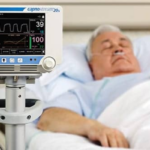
- Last Updated On: May 17, 2024
Lower Your Insurance Premiums with CPR Certifications
The average annual spending of American households per person in 2018 was $5,000, the average cost for an employer-sponsored family medical insurance plan was over $20,000, with the employer footing 70% of the bill. There are however ways to reduce premiums, BLS, and CPR certification among them. Premiums are based on risk levels calculated by insurance underwriters, so how can these certifications reduce premiums? Understanding how this life-saving training contributes to reducing the risk levels and overall lifestyle changes made by those who become more aware of their health and those around them. Below we discuss the importance of online CPR healthcare provider certification and how one can use it to lower premiums.
The Real Cost of Insurance
The economic impact of the $3.6 trillion spent annually on healthcare in the US has a significant impact on healthcare itself, with the CDC reporting that over 14 million Americans who can’t afford medical care just go without, or not repay their bills. This in turn forced costs to increase even more for Americans in high-risk pools due to their age group, occupation, or medical history. These factors, and many others, help underwriters tabulate premium amounts. Becoming CPR certified not only prepares community members and employees to respond in life-threatening emergencies but creates an opportunity for team building among the employees. The New York Times reported that the CPR courses went a long way in building trust and relationships among employees in financial firms.
Can CPR Certification Reduce Auto Insurance Premiums
CPR and first aid training in conjunction with defensive driving classes can significantly lower the auto insurance premiums. Completing CPR training aids in understanding the risks involved in the day to day life. Routine tasks like driving to work are viewed with fresh eyes after the CPR training. Should an accident occur, you can perform life-saving assistance while waiting for more qualified help to arrive. In turn, the underwriter may then see fewer claims resulting in accidental deaths in your risk group and in turn reduce premium rates, you should always inquire about discount eligibility.
Always check for Discounts
Individuals who work within careers requiring CPR and BLS certification can be eligible to apply for premium discounts. Hospitals and medical centers, local governments, and unions often partner with insurance companies to offer discounts on premiums. These discounts can also be offered to school district employees as well as child and daycare providers. Employees in sectors requiring familiarity with CPR and lifesaving certifications can often find discounts on additional insurance policies like home and life as well. Bundling insurance policies with one provider often result in even further savings.
Conclusion
It is crucial to look for an online CPR healthcare provider — not only to reduce health risks but the economic burden of insurance. Register with American CPR Care Association today and explore your options!






